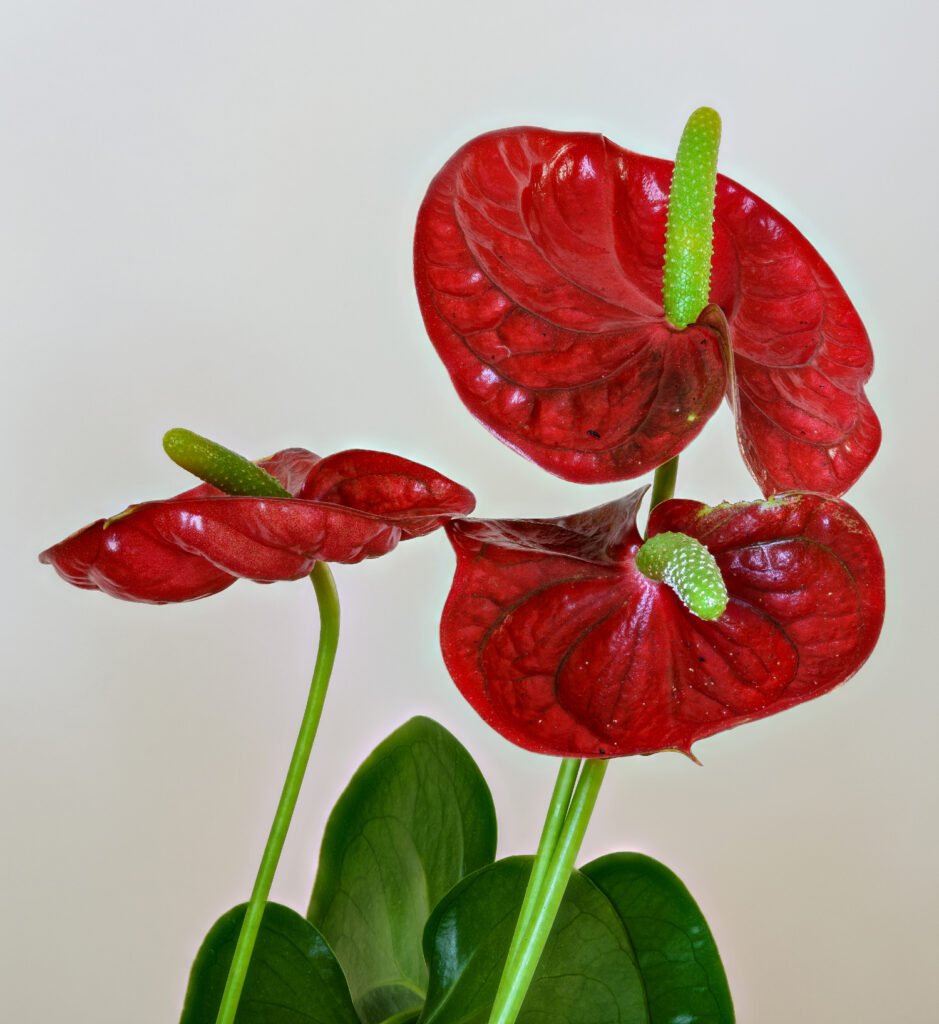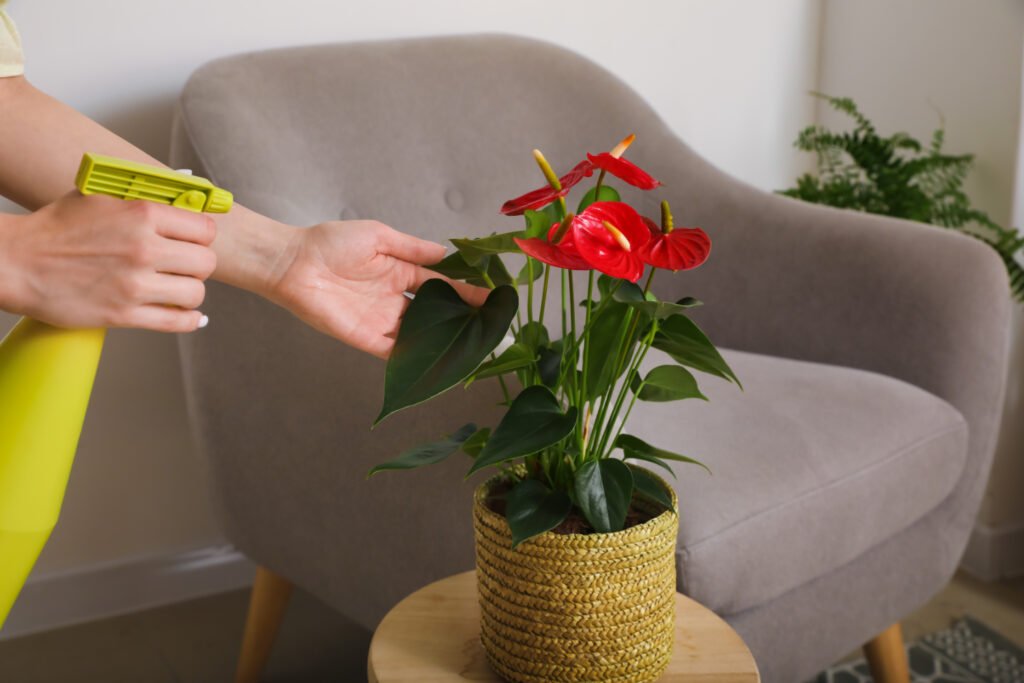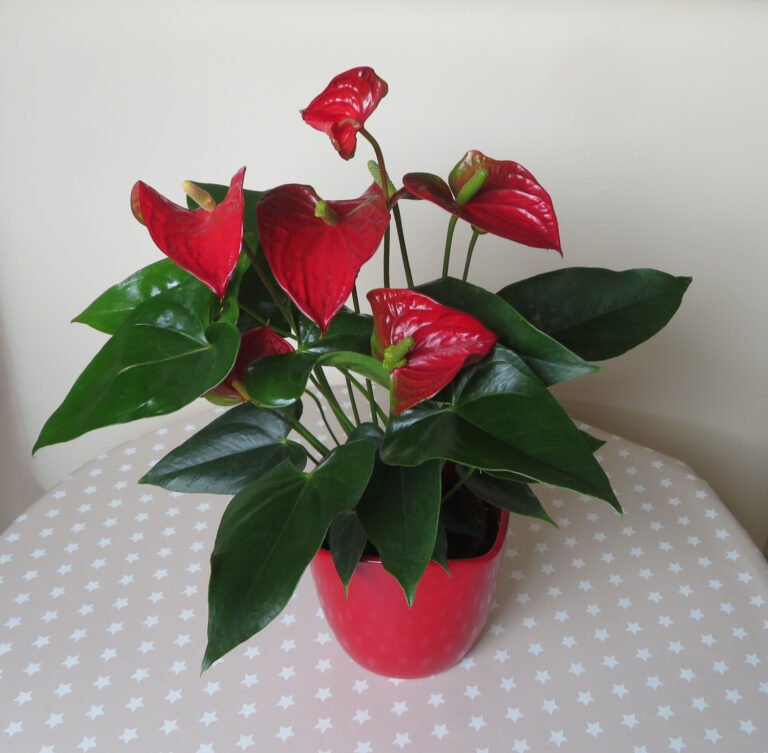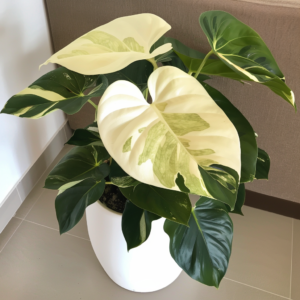Anthurium Andraeanum, also known as the Flamingo Flower or Red Peace Lily, is an indoor plant that will hold your gaze with its unique looks. Its heart-shaped leaves and long-lasting, bright flowers are one of the most interesting reasons you’d love to use it as a tabletop implant.
While some may say growing a big Anthurium is a task, the plant thrives if the conditions are to their liking. But what are these conditions?
Based on my experience with my Anthurium and its close relatives, I’m going to share the most important steps and plant care tips to grow your Anthurium plant faster and bigger!
Step 1: Use a Porous Soil
Anthuriums grow well in porous, coarse, and well-drained fresh soil. I grew mine in a potting mix of ⅓ coco peat, ⅓ peat moss, and ⅓ perlite. You could also use succulent potting mix instead of perlite with a little bit of compost.
Step 2: Keep It Under Indirect Sunlight
Most Anthurium varieties prefer medium light or indirect sunlight to grow and bloom. So, keep them a little close to the window where it gets plenty of bright indirect light.
While Anthurium does grow in low light conditions as well, its growth rate is extremely slow. And it may not flower, too. But remember, don’t keep your plant under direct sun; it will burn your Anthurium plant.

So don’t place it right at the window or outdoors under direct sunlight. Also, it prefers low light and temperature in winter.
Step 3: Water It Once a Week
Generally, the amount of water depends on the light and temperature. When the temperature goes too high, water your Anthurium every 4-5 days a week.
When the temps. go too low in winter, avoid watering unless the soil is dry as the risk of root rot is too high.
In normal temperatures, Anthurium doesn’t need too much watering. Only once a week works fine for me. Basically, it’s important for the soil to dry up a little between each watering.
Step 4: Keep It In the Humid Area
Being a tropical plant, Anthurium prefers humidity of up to 50-60%. So, if your area isn’t well-humid, using a diffuser or humidifier near your plant for a few hours in the driest time of the day will help. I also mist the plant leaves (not flowers) a few times in the week.
“But how would I know if my Anthurium is lacking humidity?”
Well, the foliage of your Flamingo Flower tells you when it’s too dry for them. Mine started showing brown tips and spots on the leaves, but as I started using the diffuser in summer, it healed.
Another easy way to keep your plant humid is to put the pot over water. You could put some pebbles in water to stabilize your pot. But make sure the pot (with or without drain holes) isn’t dipped in the water.
Step 5: Feed a Nitrogen & Phosphorus-Rich Fertilizer
The frequency of fertilization depends on the type of fertilizer you use. Anthurium grows well with a liquid fertilizer as well as slow-release fertilizer. Either way, the main nutrients to have in your fertilizer is phosphorus, potassium, and nitrogen.
If you love home composting, you can also apply a firm layer of vermicompost on the top of the potting soil. Or you can prepare a homemade liquid fertilizer using the following method:
- Chop a lemon peel (1 fruit) into tiny pieces and add it to a pot.
- Add 2 tbsp coffee grounds to the pot.
- Add a liter of boiling water to the pot and leave it for three hours.
- Dilute it with two liters of water and a glass of lemon water (½ lemon juice mixed with a glass of warm water)
Spray this liquid fertilizer via a spray bottle on the leaves as a foliar fertilizer. Remember, if you’re using a liquid fertilizer, you may have to feed your Anthurium every one or two weeks.
But with a slow-release fertilizer, it won’t need too frequent feeding. In normal light and temperatures, I only have to fertilize it every six months and it keeps my Anthurium happy.
But only feed a growing Anthurium in summer or spring time. Don’t do it in the fall or winter time when its growth rate is slow as it won’t need any food.
Step 6: Clean the Leaves Regularly

Don’t forget to clean your Anthurium plant! It’ll let your plant breathe freely, retain its shine, and boost photosynthesis.
Now, if you clean regularly, fresh water will be enough. Otherwise, you could use a mild, diluted soap and rub each leaf using a soft, cotton cloth.
Another easy cleaning method is using lemon. Squeeze a lemon in a glass of warm water and mix it well. Soak a clean cotton ball in the lemon water, squeeze the excess out, and rub both sides of the Anthurium leaves with it.
It’ll not only remove the dirt and mold from the leaves but it’ll also kill and keep the pests at bay.
Step 7: Repot It in Summer or Spring as It Grows
The best way to grow your Anthurium bigger is to repot it as it grows. I repotted mine in a bigger, wider pot once my earlier pot was filled with roots, and soon it doubled in size.
But remember, only repot it during the growing season: summer or spring. Don’t do it in the cold season as the plant likes to rest in that time.
Step 8: Prune to Get Rid of Deal Leaves
The only reason to prune an Anthurium is to grow it healthy. Simply use a clean pruner to get rid of dead flowers and yellow leaves. As for the flowers, you must cut them at the base of the stem after the flowers have bloomed and died or turned yellow or brown.
These growing tips are suitable for many Anthurium varieties. Once you know how to care for your Anthurium plant, you’ll never love any other houseplant more, trust me!
So, use this plant care guide to grow a healthy and massive Anthurium. Oxalis is another low-maintenance house plant you’d love to have in your home. Check out this Oxalis plant care guide!




